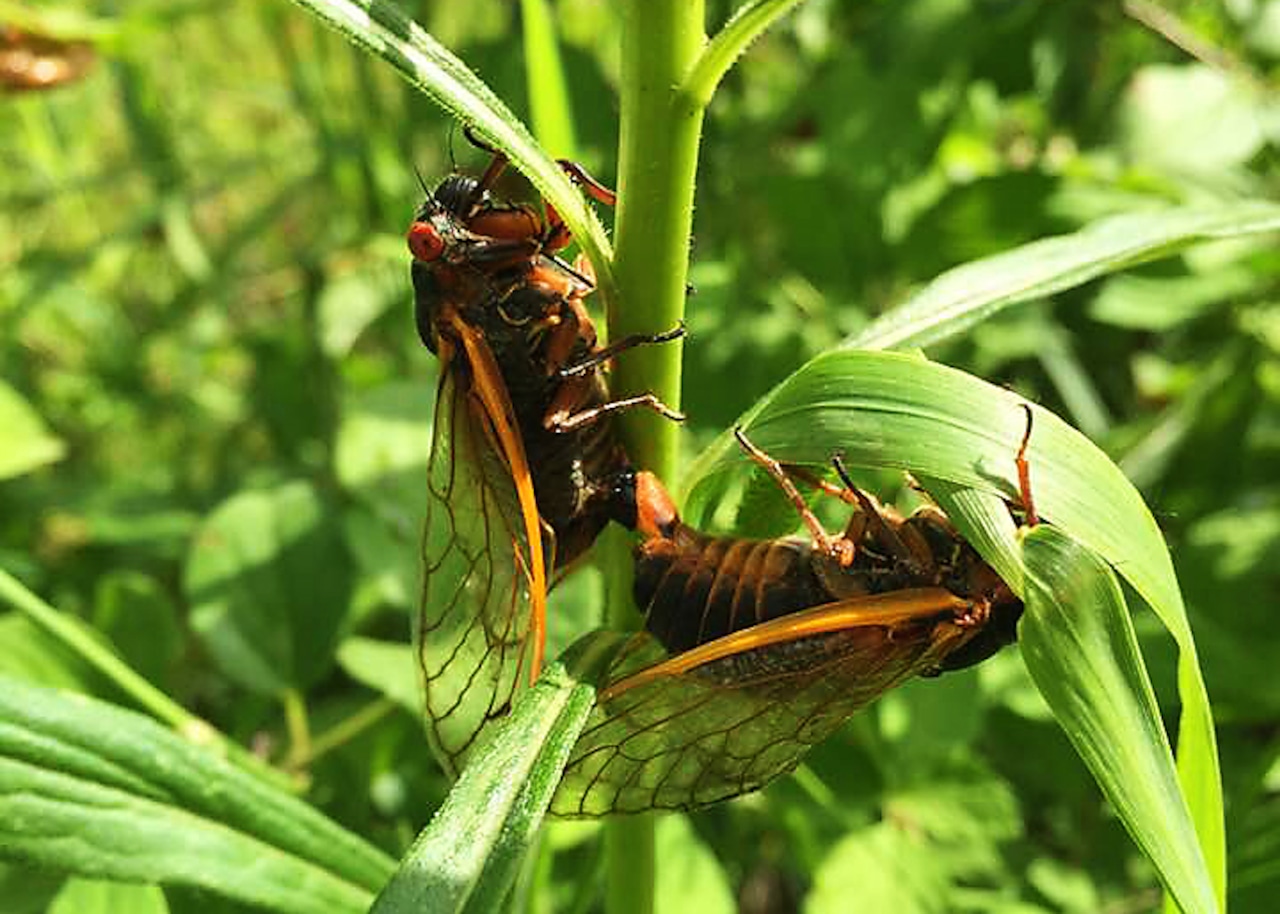
This spring is going to be a big year for cicada lovers.
Two groups — or broods — of periodical cicadas will emerge from underneath the Earth’s soil.
An event rarer than Haley’s Comet, the last time a cicada co-emergence took place was in 1803, according to Cicadamania, a website dedicated to tracking the insects. That was when the U.S. bought the Louisiana Territory from France.
“You cannot possibly be unaware that periodical cicadas are out, because they’re out by the millions and millions, and they’re noisy, charismatic, active insects that are just everywhere,” John R. Cooley, an entomologist who studies cicadas at the University of Connecticut, told MassLive in January.
Here are three things to know about the great cicada co-emergence.
What happens after the cicadas emerge?
By late April, trillions of cicadas from broods XIX (emerging every 13 years) and XIII (every 17 years) will crawl from underground simultaneously and fly across the south and Midwest looking to mate, according to Cicadamania.
Male cicadas will make a high-pitched buzzing sound to attract female cicadas to mate. After the two lovers mate, the female cicada lays her eggs on the branches of trees. Six to 10 weeks later, the eggs hatch and the nymphs fall to the ground, burying themselves in the soil, according to National Geographic.
Why do some cicadas emerge periodically?
Scientists don’t know for sure why some cicadas emerge periodically. Although there are theories that attempt to explain the insect’s behavior, many of them are flawed, according to Cooley.
A common theory is that some cicadas emerge periodically to avoid predators and their infrequent appearance helps prevent enemies from synchronizing on their life cycle.
However, Cooley is skeptical of this theory since all cicadas have predators, but less than 10 species are periodical. Some of the cicada’s natural enemies include birds, moles and Cicada killer wasps, according to the University of California Integrated Pest Management Program.
Will Massachusetts residents get to see cicadas?
Unless Bay State residents are willing to drive down to the South or Midwest, they will not get to see the great cicada co-emergence. Instead, Massachusetts residents can wait until next year, when Brood XIV will emerge across the Northeast.
The last time this brood emerged was in 2008, according to Cicadamania.
This brood was the group of cicadas that European colonists first discovered in the late 15th century, according to Cooley. The early colonizers mistook the insects for a “biblical plague.”
“If you haven’t experienced one of these things, I do recommend it,” Cooley said.





